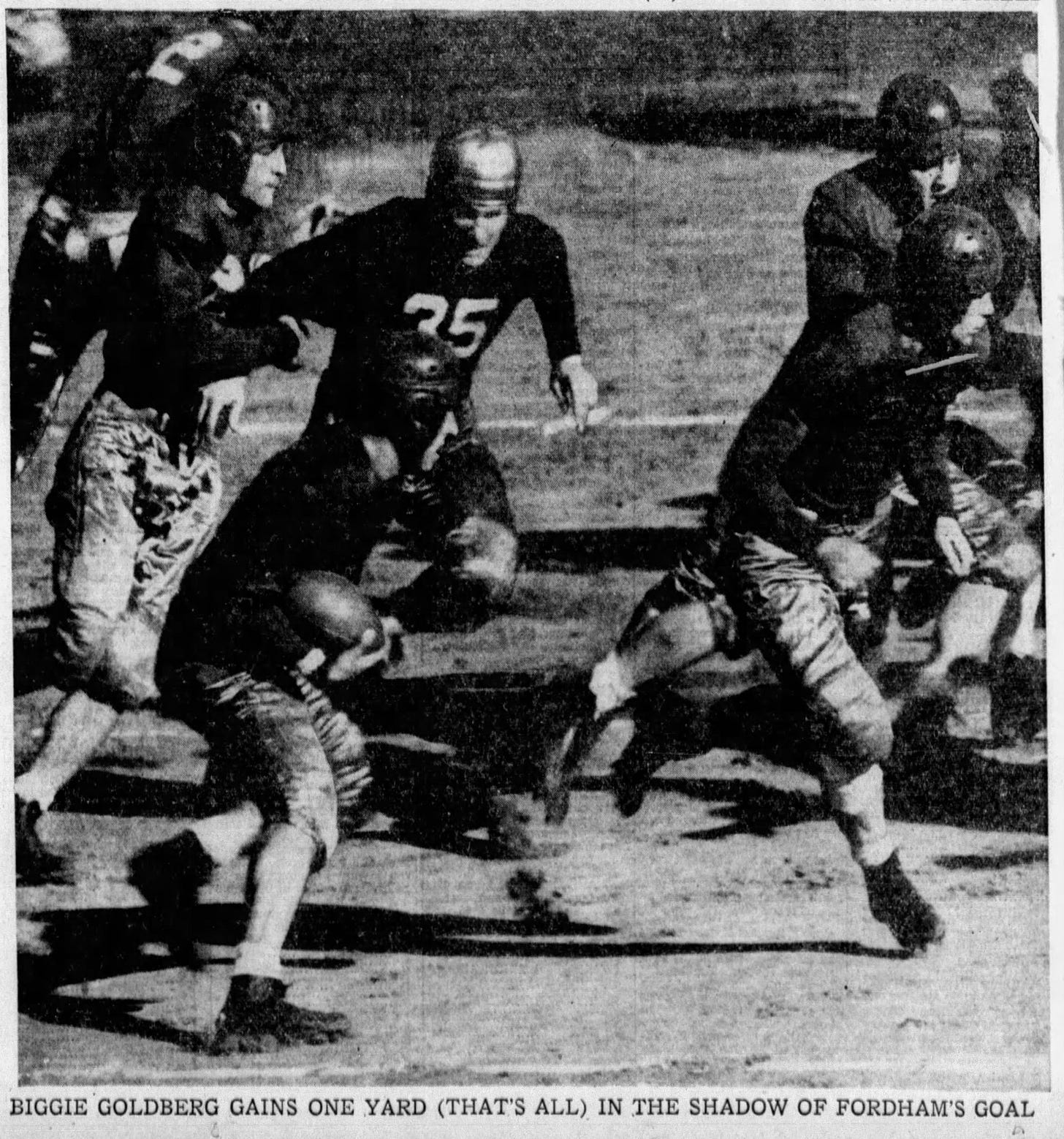In May 2023, I published Today's Tidbit... Much Ado About Nothing To Nothing, which covered the Fordham-Pitt games played in 1935, 1936, and 1937, when both were among the top teams in the East. Besides being great teams, the games were unique because they ended in 0-0 ties each year. Another element that made the games special was that Fordham's linemen in those days were known as the Seven Blocks of Granite, and Vince Lombardi was one of the blocks as the starting right guard in 1936.
The story included a picture from 1937 showing Pittsburg running back Biggie Goldberg running with the ball while being pursued by several Fordham players. The image had #35 Mike Kochel, another of the Seven Blocks, who is being held on the play.
Following the story's publication, I heard from Mike Kochel, Jr., who mentioned that his father had alternated with Lombardi in 1936 before becoming a starter in his junior and senior seasons, so I did some investigating to confirm the information received from Mike Jr.
It turns out that Mike Sr. was quite a football player. The son of Polish immigrants, he grew up on a New Jersey farm as an indifferent student but a tremendous football player before enrolling at Fordham. The rest of his life, he credited Fordham's Jesuits for knocking some sense into him, and an increased interest in school enabled him to graduate on time with an accounting degree.
Kochel starred on the undefeated freshman team in 1935, so big things were expected of him on the varsity the following year. During the 1936 preseason, the New York writers noted that Nat Pierce and Franco returned as starting guards, while senior Vince Lombardi and sophomore Mike Kochel would challenge for those spots. However, since both starting tackles from 1935 had graduated, position switches might occur to get the seven best blocks on the field.
Nearly all of Fordham's reserves from the previous year had playing experience and earned letters because coach Jim Crowley, one of Notre Dame's Four Horsemen a decade earlier, followed Knute Rockne's strategy of employing shock troops. Since football was still in the single-platoon era, Crowley, like Rockne, often substituted all eleven players, all the linemen, or all the backs, to keep his players fresh and wear down his opponents. The approach had the additional benefit of giving substitutes playing experience while games were still on the line.
Using the shock troop approach in 1935 gave Lombardi and others playing experience, which meant they were more seasoned than the typical player who came off the bench only in blowouts.
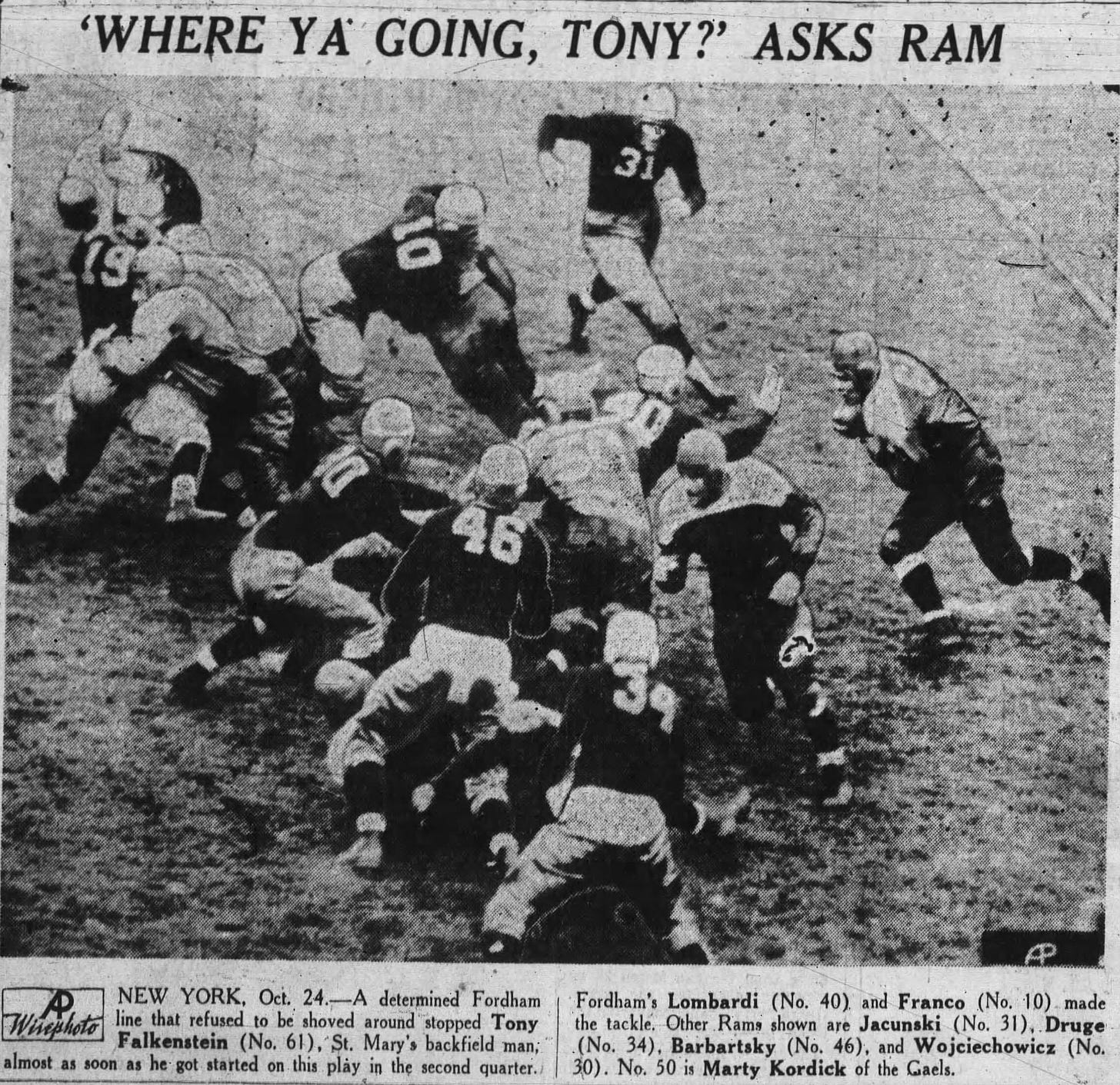
So, what do newspaper reports say about Lombardi and Kochel alternating with one another? As is often the case, the newspaper reports tell us only so much, though they tell us more about some things than is typical today. Before football moved to two-platoon football, box scores typically listed the starters and every player who was substituted into the game. Fordham’s box scores showed many more substitutions than typical of the 1930s, but they do not tell us how much playing time each player received, who substituted for whom, or any similar details.
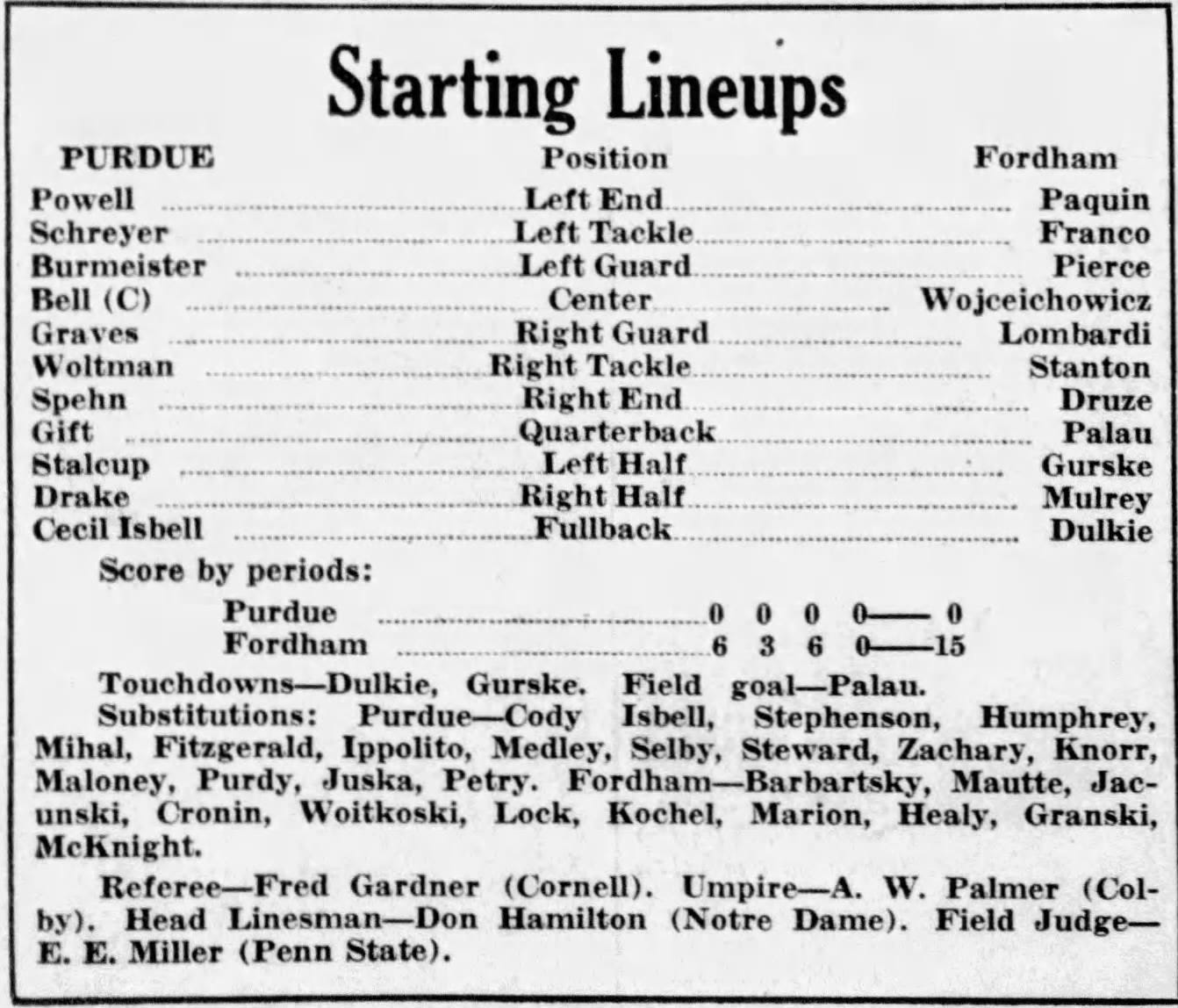
Nevertheless, by creating a player participation chart for Fordham's offensive line in 1936, we see that Kochel started the first game at right guard while Lombardi started at left tackle. For the rest of the season, Lombardi started at right guard while Kochel substituted into every game. Likewise, Franco and Pierce started every game on the left side, while the right tackle sport appears to have been up for grabs to any lineman who could claim it, whether due to injuries or other reasons.
So, the most likely story is that Kochel backed up Lombardi for most of the season, typically playing in a shock troop role, but he may have subbed in for Lombardi at other times on Fordham's 5-1-2 team. One way or another, he played well enough to be named to an honorable mention All-East team in 1936, just like Lombardi.
We all know what happened to Lombardi after 1936. He graduated, coached high school ball in New Jersey, and then moved on to Fordham, West Point, the New York Giants, Green Bay, and Washington.
On the other hand, Kochel played two more years at Fordham and did well enough to be drafted in the 19th round by the Chicago Cardinals. He played one year with them, starting three games, before deciding his 5' 11" 195-pound body was ill-suited to the NFL, so he returned to New Jersey and played for the Newark Bears.
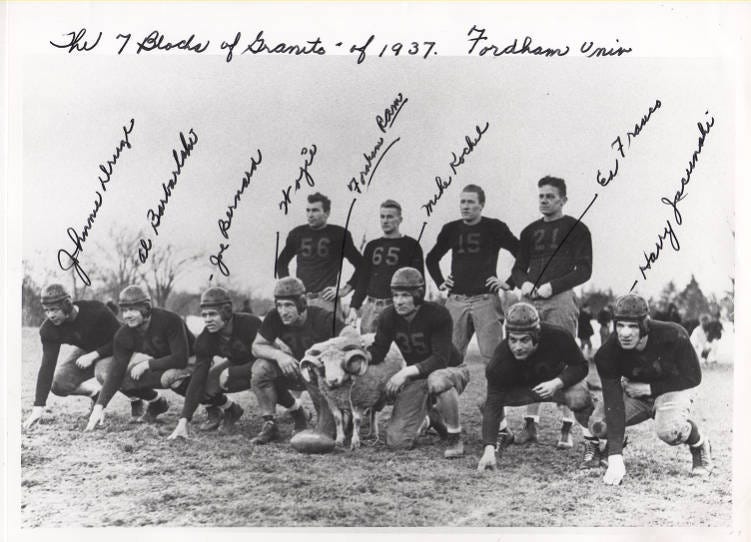
More important, he married and followed his love of flying by working as an accountant in the aircraft industry. With the start of WWII, Kochel enlisted and became a B-17 pilot, flying 27 combat missions in Europe.
After the war, Kochel spent most of his career in accounting and auditing roles for the Air Force while flying enough to maintain his pilot rating. Along the way, of course, Mike Jr. was born, allowing him to share parts of this story.
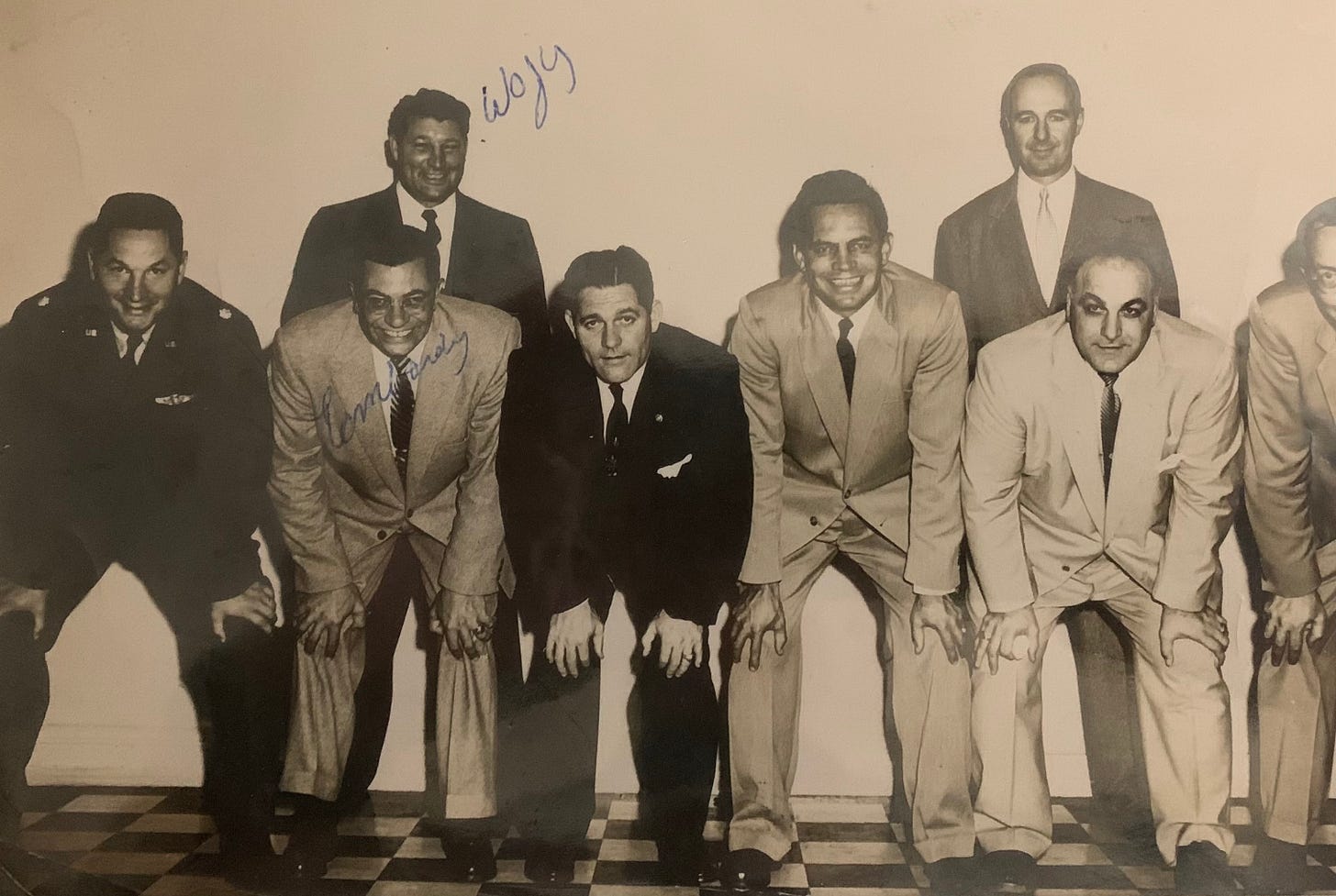
This story reminds me that even someone as legendary as Lombardi was not irreplaceable, at least earlier in his football career. He did not start until his senior year and was replaced frequently by a younger and more talented player who fully earned his shot the following year. And while their careers took them down different paths, they shared a common bond when both were aspiring students and athletes.
Click here for options on how to support this site beyond a free subscription.




